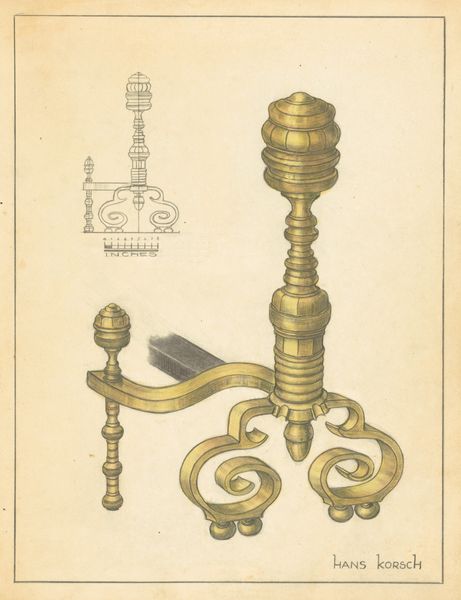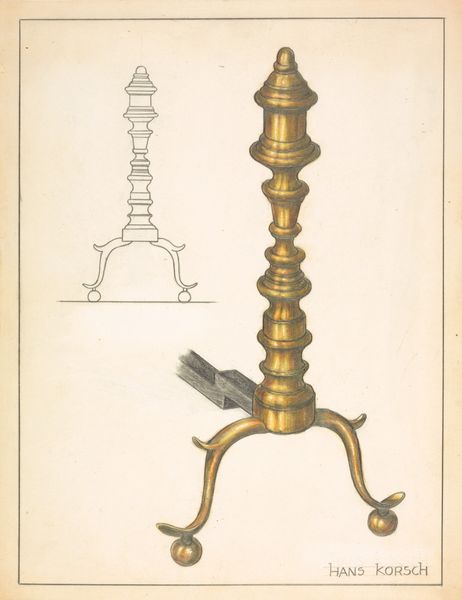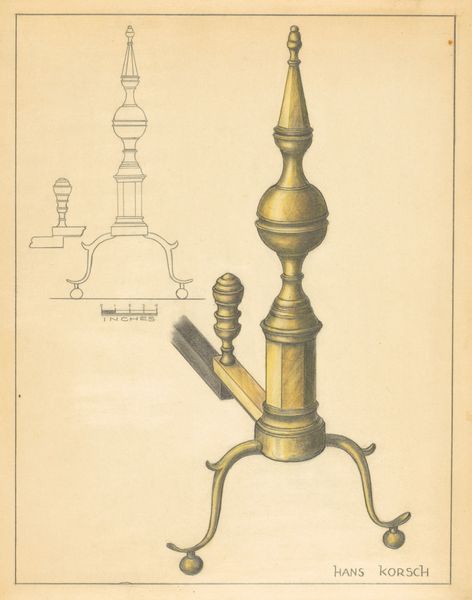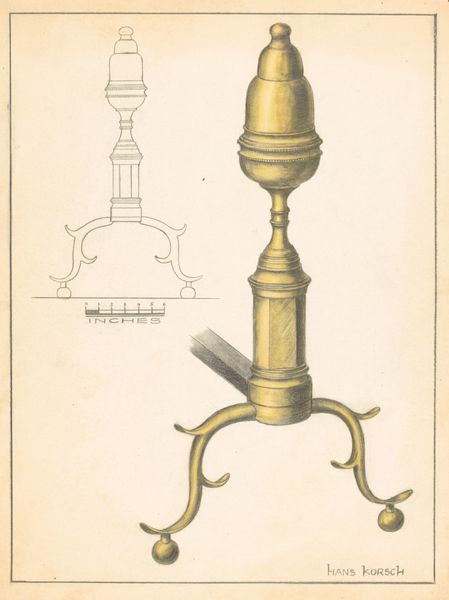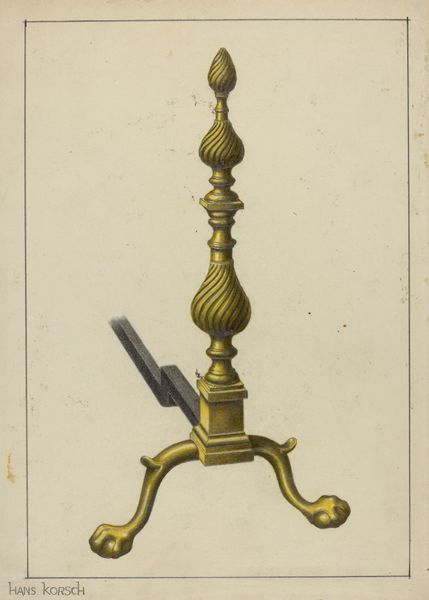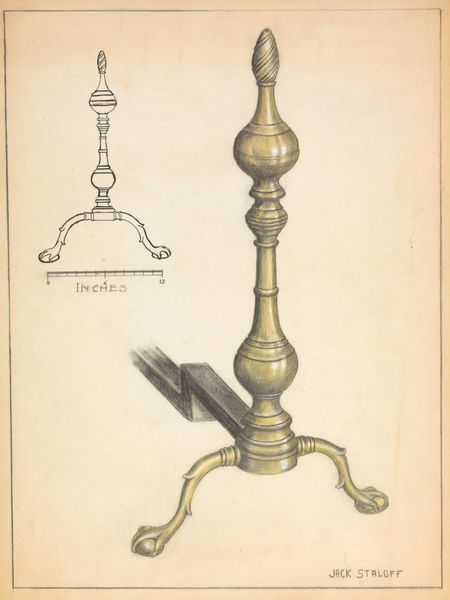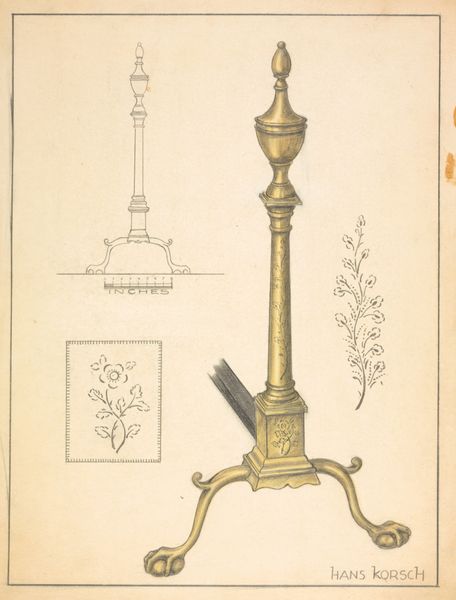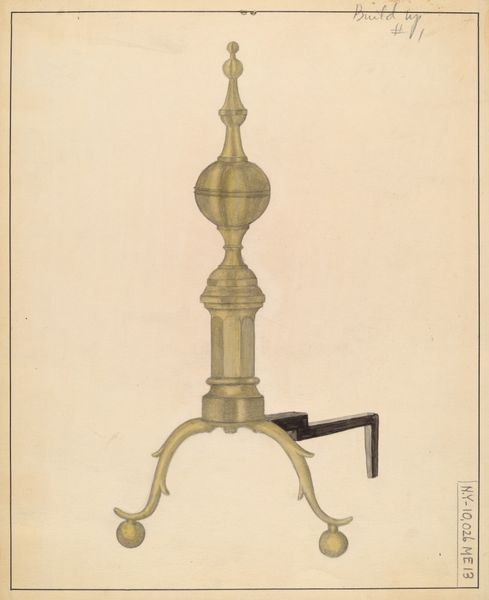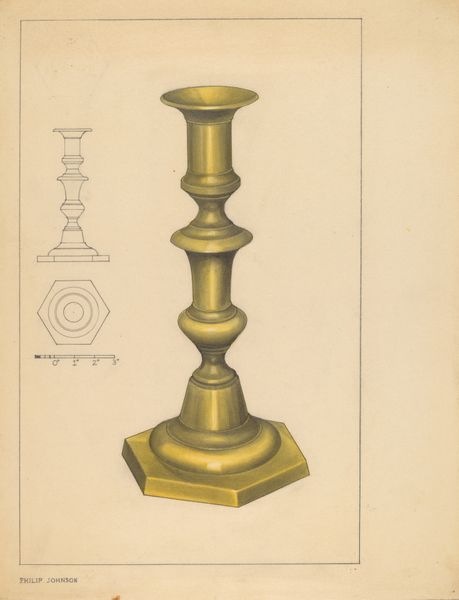
drawing, metal
#
drawing
#
metal
#
geometric
#
realism
Dimensions: overall: 28.8 x 22.3 cm (11 5/16 x 8 3/4 in.) Original IAD Object: 24" high
Copyright: National Gallery of Art: CC0 1.0
Editor: Here we have "Andirons (right and left)" by Hans Korsch, dating back to about 1939. It appears to be a drawing of metal objects. I'm immediately struck by the blend of precise geometric forms and the more decorative, almost baroque-like, swirls at the base. What draws your eye when you look at this piece? Curator: What interests me is less the finished object depicted, and more the means of its proposed production. These andirons, functional objects designed for the domestic sphere, straddle the line between craft and industry. Korsch's rendering in a drawing suggests a design intended for manufacture. Editor: So, you see this as a blueprint for mass production, rather than a unique, handcrafted item? Curator: Exactly. We should consider the materials themselves, typically iron or brass, and the labor required to shape them. This design hints at the increasing industrialization of domestic life, where even fireplace accessories were becoming subject to mass production and consumption. How do the andirons’ forms affect your interpretation? Editor: Well, the geometric elements feel almost streamlined, like an embrace of modernism, yet those swirls at the base…they complicate things. Curator: They speak to a tension, don’t they? A tension between the efficiency of industrial processes and a lingering desire for ornamentation and luxury within the home. Consider who would have purchased these; what social class are they speaking to with their design? Editor: That's a great point! It makes you think about the social context, the aspirations of the consumer, and the artist's role in negotiating those desires. Curator: Precisely. Analyzing the materiality and the potential means of production opens up fascinating avenues for understanding the object's place in the wider world. It shows that art is always embedded in concrete material practices and that taste reflects particular material conditions of existence. Editor: I see what you mean. Looking at the material choices and intended manufacturing gives the object meaning and expands beyond pure aesthetics. Thanks!
Comments
No comments
Be the first to comment and join the conversation on the ultimate creative platform.
